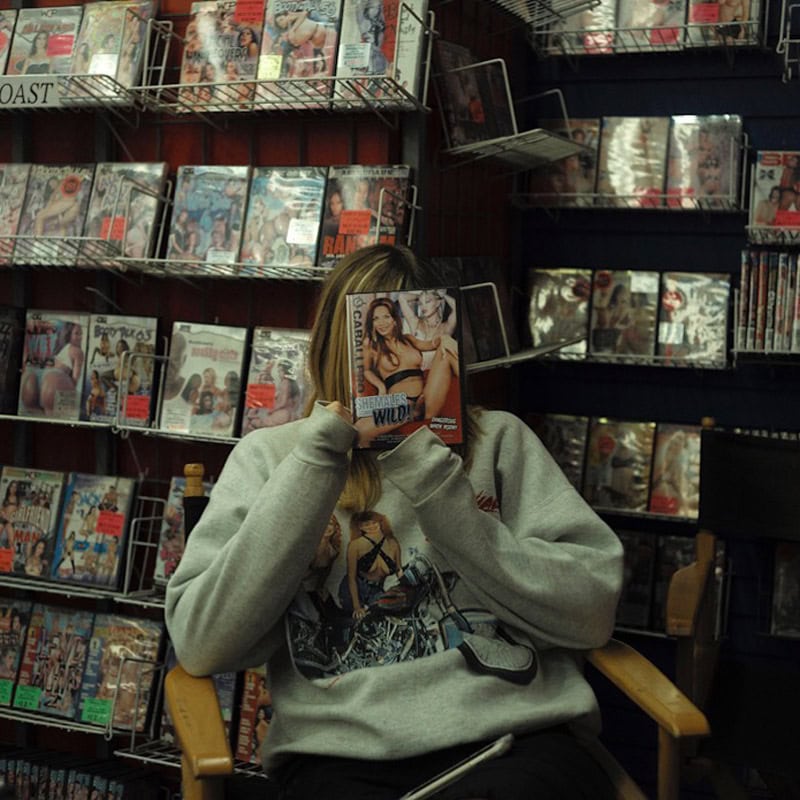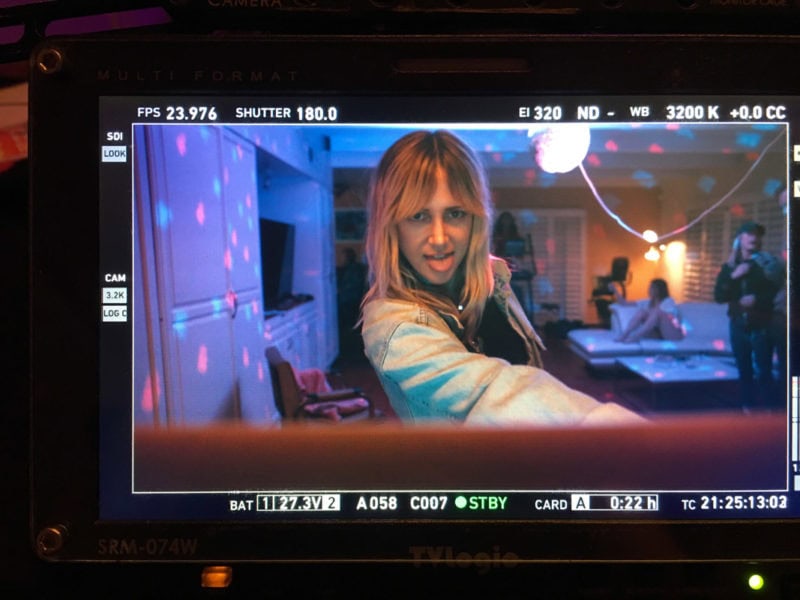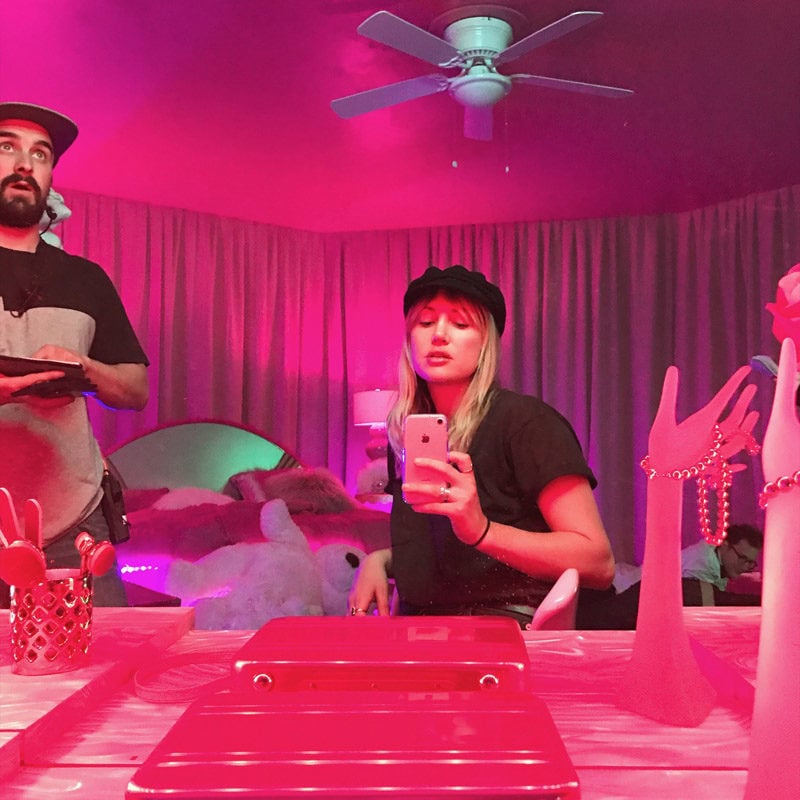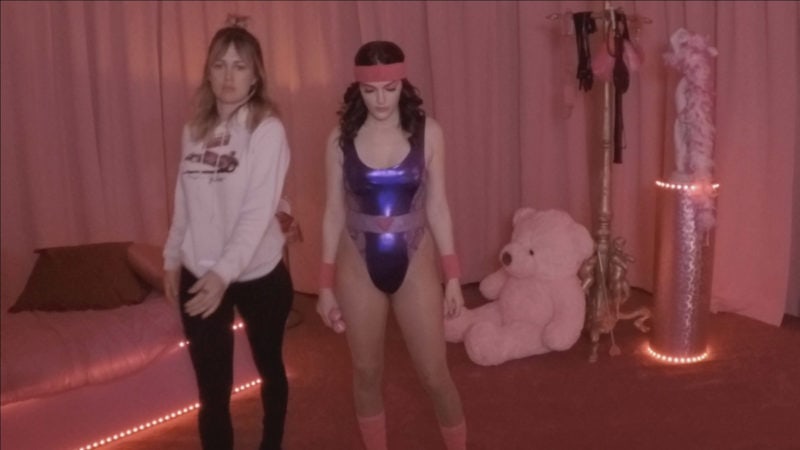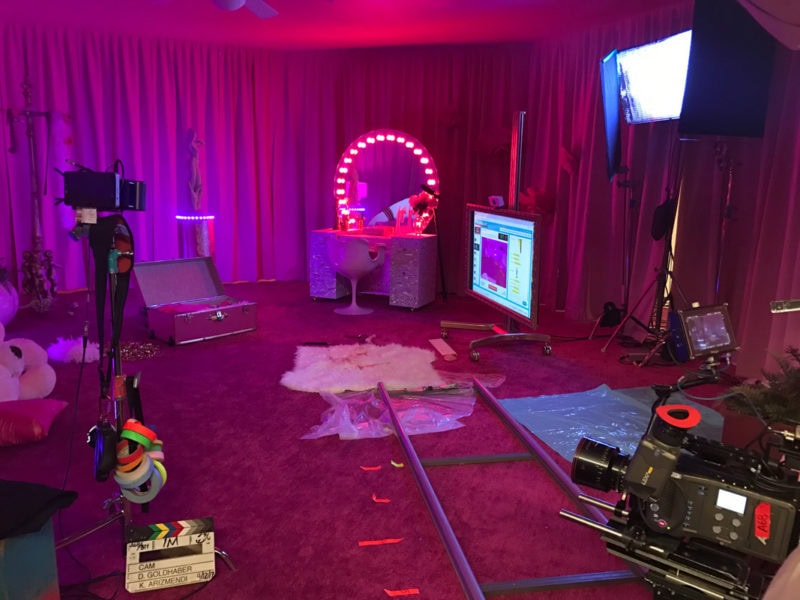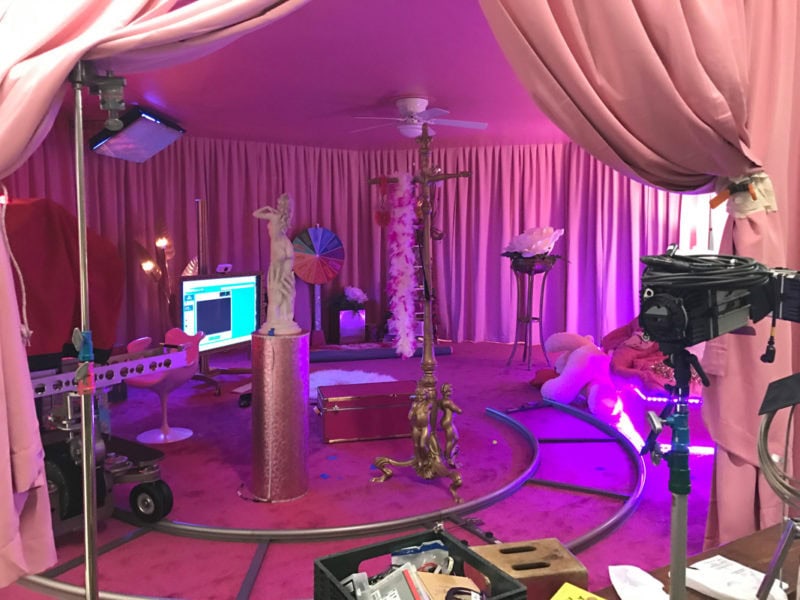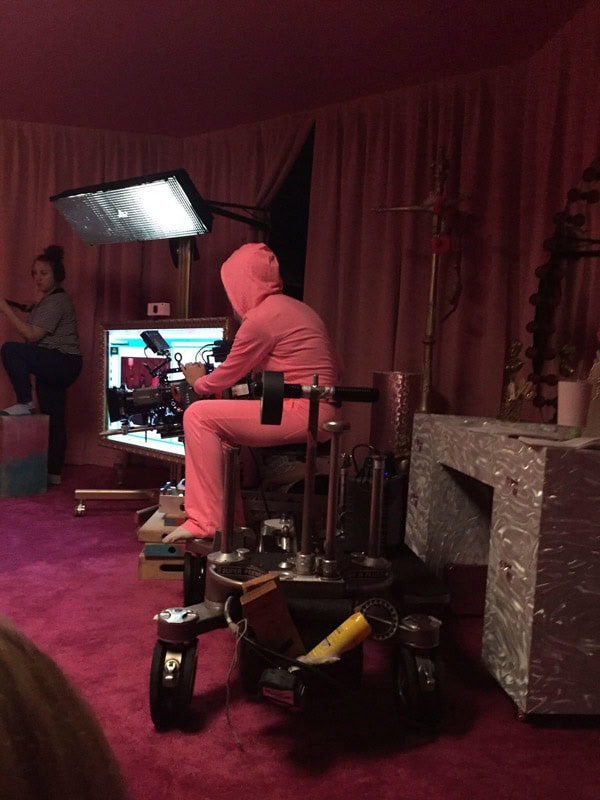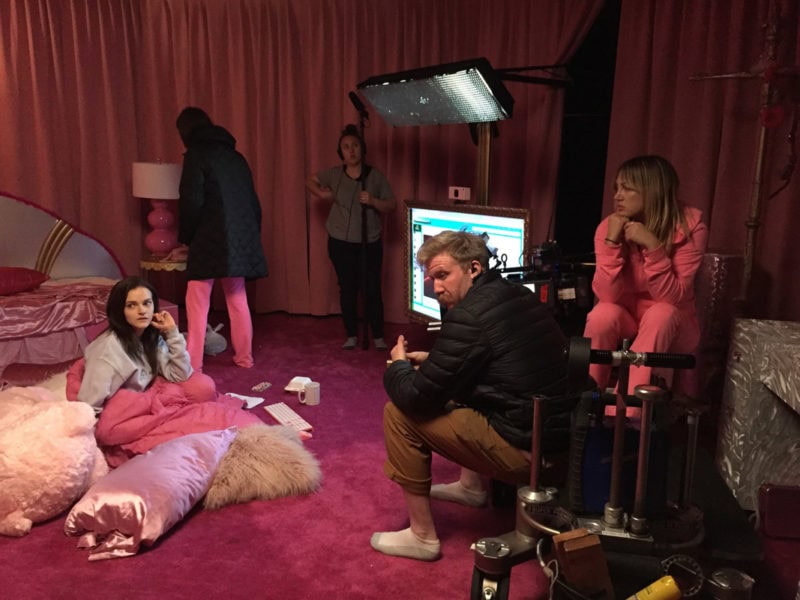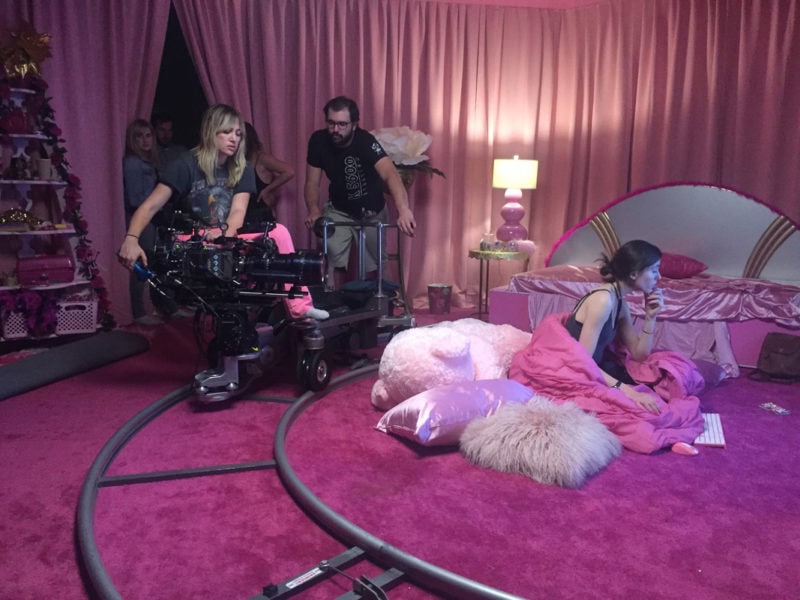1996. Dickinson College, Carlisle, Pennsylvania.
Jennifer Ringley, 19 years old, decides to switch on her webcam and stream her dorm-room life 24/7. “JenniCam” was born: a website streaming live images from a web- cam that automatically refreshed every 3 minutes.
A glimpse into Jenny’s everyday life, which ranged from her brushing her teeth and doing laundry to her stripteasing and having sex. It started out as an experiment in real-time documentary and ended up with 4 million hits per day. That simple act changed the world as we knew it. At first glance, it seems like a perfectly innocent thing to do, but with that decision, Jenny created a brand new way to share life with an entire globe of strangers.
She brought an aspect of humanity into the dawning computer age. She demonstrated the profound need of young people to connect, bond and create relationships in a completely different way. Their need to destroy everything that came before to create something new. In 1998, Jenny realised that this experiment had financial potential so she started charging through PayPal for “premium” access to more images. Not only was she the predecessor of online identity, but also of modern cam girls.
Who is Katelin Arizmendi? Tell us a bit about yourself and why you chose this career.
I’m the middle child of the family. The weird, eccentric, rebellious one I guess you could say. Although my older brother was always the one obsessed with movies when we were kids. We grew up on 80s horror films at way too young of an age and we were always making films with our neighborhood friends. I eventually decided to study film theory at UC Santa Cruz which had a few experimental production classes, where I wrote, shot, acted in and edited everything. So needless to say, I had no idea about real production after film school. I went on to study Cinematography for my MFA at Academy of Art in San Francisco where I completely fell in love with the role of a DP through shooting 16mm film. I love the technical side of it but ultimately it comes down to emotion, instinct, and trusting your own eye.
Talking about CAM. How did this project begin? How did it develop?
The director Daniel Goldhaber reached out to me about the project, which he co-wrote with former cam girl Isa Mazzei. We had a long Skype call about the film and how we would approach shooting it. I remember telling him that I started out by making lots of experimental, sexual, visceral fashion films after film school and that after the last few years of shooting commercials, I felt I had ‘normalized.’ I had read a few feature scripts before but wanted to wait until I found something bold and daring for my first feature. Cam was everything I had hoped for. Daniel wasn’t afraid to push the genre, push the visuals, push the actors. We had a really amazing team involved and got to make a film about the cam world from a very first-person perspective, bringing audiences into a world that hadn’t often been portrayed before.
The whole movie leaves the viewers in complete suspense not only through the writing and direction, but also the cinematographic world that Alice inhabits: everything seems cosy and girly yet it is also impersonal and doesn’t reveal much of her personality and character. It feels like living in an anonymous world.
How did you develop the aesthetic for this character and her world?
What did you want to express?
The cam world was very much created by Isa, Danny, and Emma Rose Mead, the production designer. Isa’s experience as a cam girl brought so much vital information about the way these girls often differentiate their cam world and their real world. Alice’s cam room has a fantasy element to it yet it doesn’t feel impossible that she could have created it in her own home. It’s common for cam girls to dress up, create characters, or create a world in which they can put on an act for their viewers. Having said that, many of them are also very low key and don’t do any of the above. What I found really interesting and very realistically portrayed in Cam, was how disheveled Alice’s real bedroom was. This distinction between the cam world and real world was something I discussed heavily with Danny from the beginning. I made a mood board for each, where the cam world had lots of colored lights, an intense use of blue monitor light mixed in with pinks, reds, neons, etc. The real world had more neutral and cooler tones to emphasize the drab reality outside of this fantasy world.
Discussion about cam girls immediately has very sexual connotations. But this movie portrays them in a very real and human way, showing what’s behind the job. Tell us a bit more about this world and how you portrayed it.
That was one of the most interesting parts about Cam to me. I immediately thought the same thing but I think the film appealed to a much wider audience because it wasn’t overly sexualized. These days, everyone can relate to this idea of creating an alter ego through social media, so it became more about Alice losing control when this online persona transcends into her actual being. What I also learned while researching the cam world (by which I mean Danny and I watching cam girl sites in pre-production) was that sometimes it’s not even sexual. It can be more about being there for someone to talk to, perhaps even serving as some form of therapy or filling a void for people.
Why did you choose the colour pink for Lola’s room and then blue in the end?
The pink room was always my choice from the first time I read the script. It was even known as “The Pink Room” during production. I was drawn to the blue light the monitor gives off in the pink room which has this almost poltergeist presence so I played a lot with that. The blue was an aesthetic choice by Danny and Emma. I suppose it’s a nice polar opposite to the pink room, but still over the top and expressive of this fantasy world.
Which is your favorite scene and why? What kind of feeling does it give you watching it?
I love the whole sequence from the library to the birthday party scene. It’s the peak of Lola bleeding through into Alice’s real life and it’s horrifying to watch. The library scene is so uncomfortable and when it leads you into her brother’s birthday party, we chose to shoot that whole scene in one long Steadicam take to build tension. It doesn’t cut until the phone goes flying into the room and her whole family hears Lola. I just love the way we covered the scene and Brian Freesh, our Steadicam operator, helped design and execute such a complicated shot.
We live in a society where people live their sexuality and personal relationships much more freely than previous generations. And have infinite mediums to express it. How do you feel about modern society, sexuality and cam girls?
I’m a huge advocate of sex workers and using your body in whichever way you feel. I’ve always been drawn to work that uses the human body as an art form, whether that’s photographers like Ren Hang who would create shapes and sculptures through different body parts and limbs; Araki, the photographer who would often use bondage on women in his photos; and modern day artists like Arvida Bystrom who uses her own nudity to challenge conventional ideas on menstrual cycles, body hair, body image, etc. I think it’s an exciting time where people are more open to seeing and talking about sexuality, gender is becoming transcendent, and the idea of people using sex as a means for work is becoming empowering. I hope to be able to tell more stories like this throughout my career.
